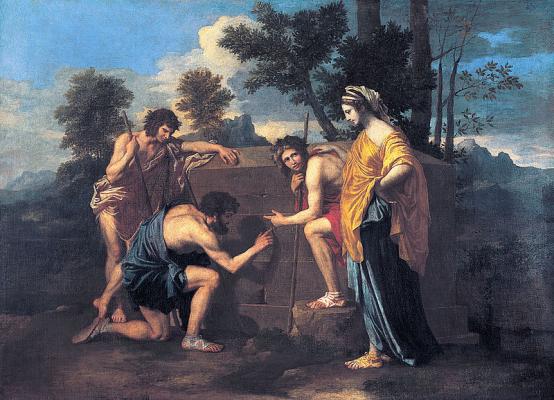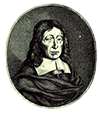
The French neoclassical painter Nicolas Poussin (1594-1665) comes closest among painters to matching Milton's formal poetic style. Here Poussin shows shepherds pondering the inscription on a tomb in the classic pastoral setting of Arcadia (in ancient Greece). The tomb bears the famously ambiguous Latin inscription "et in Arcadia ego" – "and I in Arcadia" – which has been variously interpreted. Either it means "I, the person ensepulchured here, was also a [happy] native of Arcadia, but now am dead [as you shepherds too will be, even though you now live in Arcadia]." Or it can be more broadly interpreted as an admonition seemingly spoken by Death himself: "Even happy shepherds cannot escape me because I too am found in Arcadia." Whatever the meaning, the painting shows a pastoral situation analogous to that in Lycidas of shepherds meditating on death. The pastoral mode was regularly used as a form of funeral elegy, as in Lycidas.
